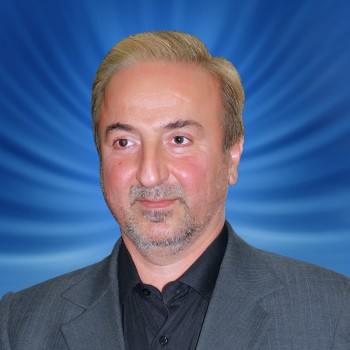tRNA Contains Modified Bases
KEY CONCEPTS
- Eighty-one examples of modified bases in tRNAs have been reported.
- Modification usually involves direct alteration of the primary bases in tRNA, but there are some exceptions in which a base is removed and replaced by another base.
- Known functions of modified bases are to confer increased stability to tRNAs and to modulate their recognition by proteins and other RNAs in the translational apparatus.
Transfer RNA is unique among nucleic acids in its content of modified bases. A modified base is any purine or pyrimidine ring except the usual A, G, C, and U from which all RNAs are synthesized. All other bases are produced by posttranscriptional modification of one of the four bases after it has been incorporated into the polyribonucleotide chain. The ribose sugar of some tRNA nucleotides is also methylated on the 2′–OH to produce the 2′-O-methyl modification.
Although all classes of RNA display some degree of modification, the range of chemical alterations to the bases is much greater in tRNA. The modifications range from simple methylation to wholesale restructuring of the base. Modifications occur in all parts of the tRNA molecule. They vary considerably in their extent of conservation among tRNA types and in the location of the molecule at which they are found. Modifications specific for particular tRNAs or small subgroups of tRNAs are generally less common than those present more broadly. Some species-specific patterns have also been identified. In all, there are 81 reported different types of modified bases in tRNA. On average, each tRNA is modified at about 15% to 20% of its bases.
The modified nucleosides are synthesized by specific tRNAmodifying enzymes. The original nucleoside present at each position can be determined either by comparing the sequence of a mature tRNA with that of its gene or by isolating precursor molecules that lack some or all of the modifications. The sequences of precursors show that different modifications are introduced at different stages during the maturation of tRNA.
The many tRNA-modifying enzymes vary greatly in specificity. In some cases, a single enzyme acts to make a particular modification at a single position. In other cases, an enzyme can modify bases at several different target positions. Some enzymes undertake single reactions with individual tRNAs; others have a range of substrate molecules. Some modifications require the successive actions of more than one enzyme.
Some details of the structural basis for tRNA modification by enzymes have emerged. One striking example is the mechanism by which archaeosine, a modified G, is introduced into the D-loop of certain archaeal tRNAs. To access the base to be modified, which is normally buried within the tRNA tertiary core, the tRNA guanine transglycosylase enzyme facilitates a dramatic induced-fit rearrangement of the tRNA to produce an alternative tertiary structure termed the lambda form. Induced-fit rearrangements of the tRNA structure have also been observed for other modifying enzymes and constitute a common theme in recognition.
Known functions of modified bases are to confer increased stability to tRNAs and to modulate their recognition by proteins and other RNAs in the translational apparatus. Roles for modified bases in recognition by aminoacyl-tRNA synthetases, for example, have been clearly defined in a number of cases . However, in many cases the biological role of the tRNA modification remains unknown. FIGURE 1 shows some of the more common modified bases. Modifications of pyrimidines (C and U) are generally less complex than those of purines (A and G).
![src=../../../medea/images/2_891.jpg]()
FIGURE 1.All four bases in tRNA can be modified.
The most common modification made to uridine and cytosine is methylation, which may occur at several different positions on the ring. Methylation at position 5 of uracil creates ribothymidine (T). The thymidine base is identical to that found in DNA, but in tRNA it is attached to ribose rather than deoxyribose. This thymidine is found in nearly all tRNA molecules at position 54 in the TψC-loop.
Pseudouridine is a striking uridine modification that is generated by cleavage of the glycosidic bond, followed by constrained rotation of the liberated ring and rejoining of the C5 carbon to the C1 carbon of the ribose. Thus, pseudouridine lacks an N-glycosidic linkage. Nearly all tRNAs possess pseudouridine at position 55 of the TψCloop. Position 56 is also very highly conserved as cytosine; together, the TψC sequence at positions 54 through 56 provides the basis for naming this portion of the tRNA molecule.
The dihydrouridine (D) modification, which is generated by saturation of the double bond joining C5 and C6 of uracil, is nearly universally found in the D-loop of tRNAs. As for the TψC sequence, this D modification provides the basis for naming the D stem-loop of the tRNA. The removal of the double bond in D destroys the aromaticity and planarity of the uracil ring, generating an unusual structure that subtly modifies the shape of the globular core of the tRNA.
The nucleoside inosine (I) is normally found in the cell as an intermediate in the purine biosynthetic pathway. However, it is not directly incorporated into RNA. Instead, its presence depends on modification of A to form I. The incorporation of I at the 5′-anticodon position contributes importantly to wobble base pairing at the third codon position of mRNA .
Modifications of A and G often generate dramatic new structures (see Figure 1). For example, two complex series of nucleotides depend on modification of G. The Q bases, such as queuosine, have an additional pentenyl ring added via an –NH linkage to the methyl group of 7-methylguanosine. The pentenyl ring may carry a number of additional groups. The Y bases, such as wyosine, have an additional ring fused with the purine ring itself. This extra ring carries a long carbon chain; again, it is a chain to which further groups are added in different cases.
















